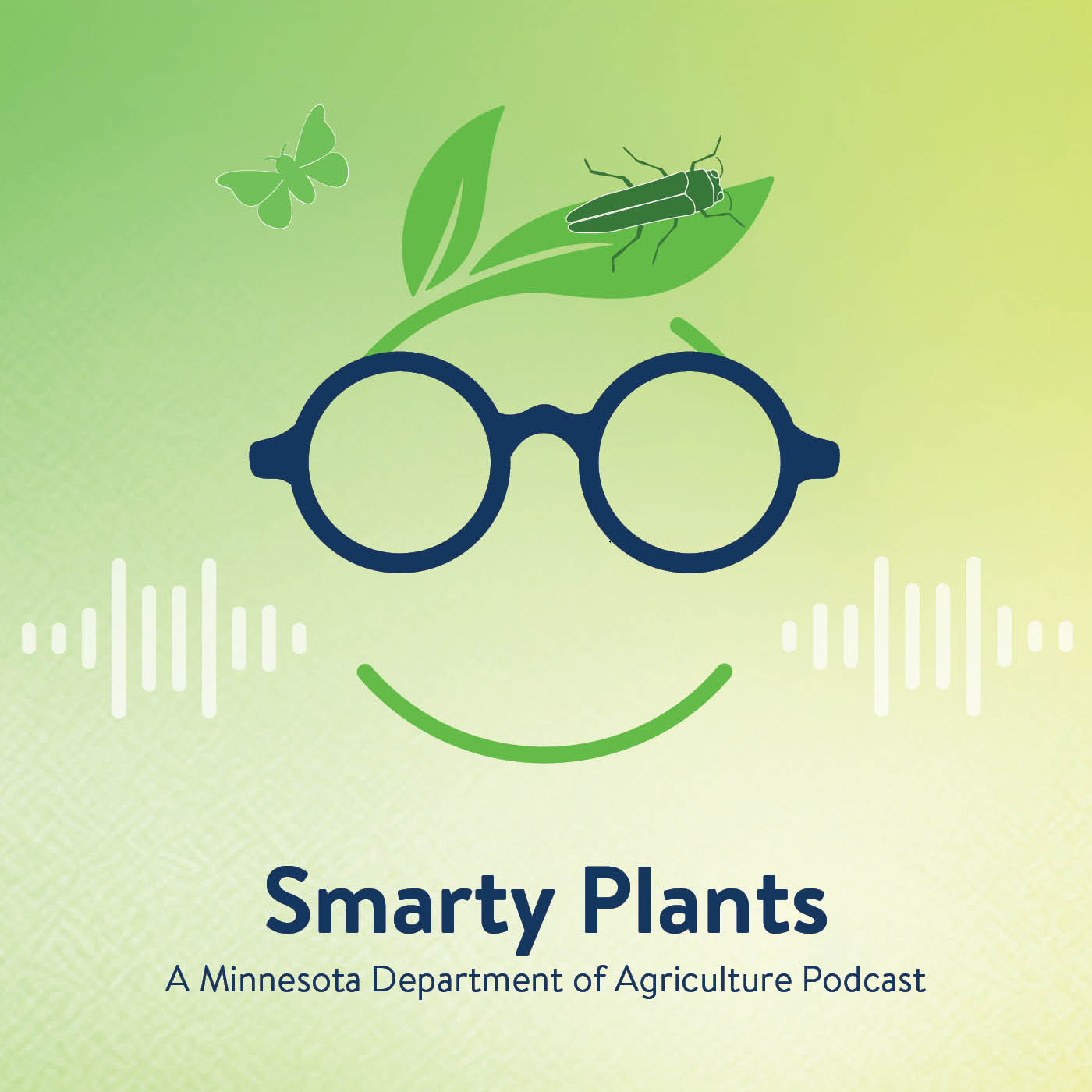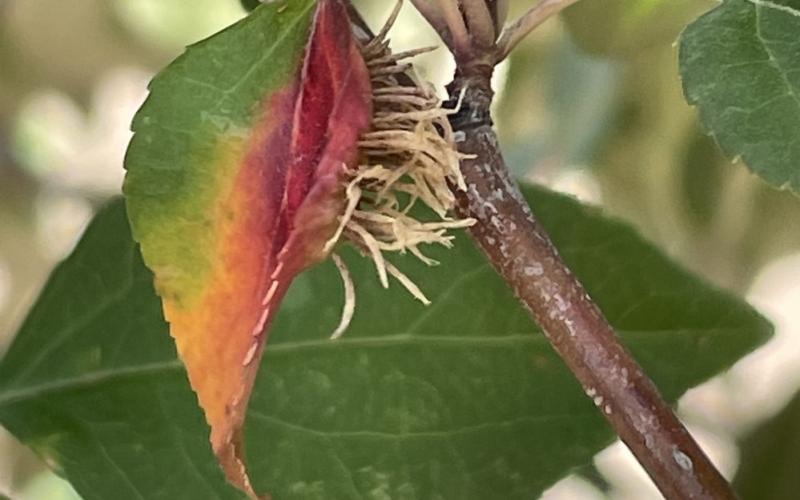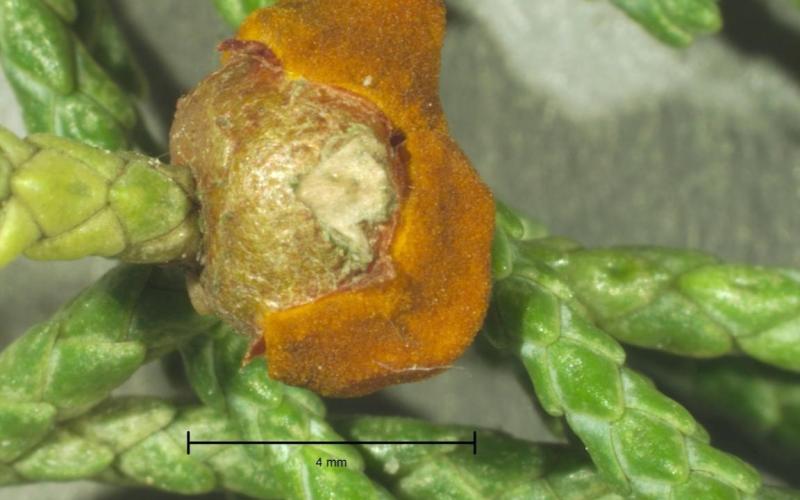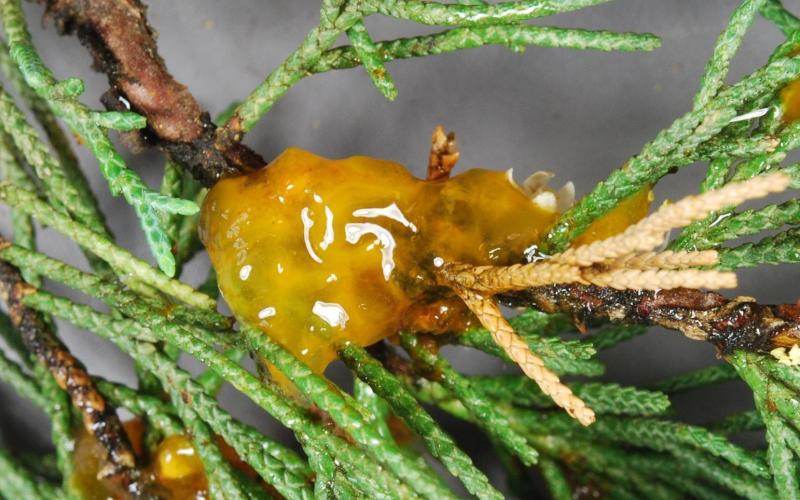Scientific name: Gymnosporangium yamadae
Red star rust (formerly known as Japanese apple rust) causes leaf spots in apple and crabapple trees. Apple tree varieties that are very susceptible to the disease may drop their leaves because of the infection. It is currently unknown how apple varieties commonly grown in Minnesota will respond to red star rust. Small woody galls form on twigs and branches of junipers, but this is not considered a serious threat to the health of the juniper plant. In Minnesota, red star rust has been found on apple and crabapple trees in commercial apple orchards, nurseries, and residential plantings.
Biology
Red star rust acts very similar to Minnesota’s native cedar apple rust, infecting both juniper and apple trees at different stages of its life cycle. Red star rust primarily infects the leaves of apple and crabapple trees and only very rarely infects fruit or twigs. Spores from leaf spots on apple trees are carried by wind to infect nearby junipers in late summer. These infections produce small round woody galls. Juniper galls produce a gelatinous orange mass in warm, wet spring weather. Spores from these galls can be carried up to 3 miles by wind and rain to infect apple trees.
Plants that commonly show leaf spots when infected by red star rust
-
Apple (Malus spp.)
-
Crabapple (Malus spp.)
Plants that commonly show woody galls when infected by red star rust
-
Chinese juniper (Juniperus chinensis)
-
Sargent juniper (J. chinensis L. var. sargentii)
-
Savin juniper (J. sabina)
-
Flaky juniper (J. squamata)
-
Garden juniper (J. procumbens)
Identification
Apple and Crabapple
Leaf spots on apple and crabapple can be bright red, orange, or yellow (Figure 1). A red ring often encircles yellow and orange leaf spots. In mid to late summer, finger like fungal spore producing structures can be seen on the lower leaf surface immediately below the leaf spots (Figure 2). Powdery chestnut brown spores may be visible on your fingers if you rub the lower leaf surface when spore producing structures are present.
Juniper
Small (<0.4 inch in diameter) round to irregular woody growths form on juniper twigs and at the base of leaves (Figure 3). In warm wet spring weather, a bright orange gelatinous fungal mass emerges and releases fungal spores (Figure 4). Galls will be most easy to identify in spring, immediately after rain, when the fungus is sporulating.
Management
Fungicides can be used to protect apple and crabapple trees from red star rust. These fungicides must be applied to the tree before infection occurs, following guidelines recommended for cedar apple rust management.
Reporting Red Star Rust
If you suspect you have found red star rust, take pictures of the upper and lower leaf surface of the infected leaves.
The Minnesota Department of Agriculture (MDA) may contact you to request a sample for further laboratory testing to confirm the diagnosis.
 Discover Smarty Plants, the Minnesota Department of Agriculture's podcast that digs into the fascinating world of invasive species. Join expert guests as they share insights and solutions to protect our environment and agricultural resources. Visit Smarty Plants and start listening today.
Discover Smarty Plants, the Minnesota Department of Agriculture's podcast that digs into the fascinating world of invasive species. Join expert guests as they share insights and solutions to protect our environment and agricultural resources. Visit Smarty Plants and start listening today. 




